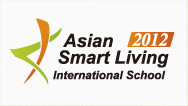 |  |
| Community Empowerment Due to rapid modernization, Taiwan is facing problems including the rural-urban developmental disparity and the increasing instability among people. The government, therefore, has proposed a concept of community empowerment which entails the residents within the same community working together to solve the problems. The main purposes of this concept are to bring the community to a common consensus and create a sustainable living environment that conforms to eco-development. In recent years, the Yilan government has actively considered its local resources and helped to develop a few communities with their own specialties. Meanwhile, the Yilan Family Culture Museum continues to promote the unity and strength of the communities. Yilan is looking to preserve regional cultural assets by having communities, residents and museums sustaining and nourishing one another. In the following are the introductions of two distinctive communities in the family of Yilan Family Culture Museum. Greater Erjie Community Construction of the Greater Erjie Community is originated from local traditional faith. Wangong Temple in Erjei is over two hundred years old; it's the community center for local residents. In 1997, due to constant leakage of the roof, the old temple was scheduled to be rebuilt; however, thousands of residents chose to relocate and preserve this historic temple by themselves. The temple is now the Erjie Cultural Pavilion, bearing the nickname "Erjie Miracle". The residents also carefully maintained the full original features of barns built during the period of Japanese colonization. With a renovated interior, Erjie Barn has been listed among the historical buildings and now serves as an education center for visitors. The other important estate close to the local life is paper. Again, during Japanese | lcolonization, paper mills were prosperous; they were the motors of the local industry and the common identity of the residents. To continue the paper culture, community volunteers in Erjer Paper Workshop guide visitors to experience different paper crafts. Currently the paper workshop is making ends meet by selling hand-crafted products by the volunteers. How to further refine the products and seek effective marketing channels are vital issues for the Erjie community. Baimi Community Baimi Community is located in Suao Township, which is rich in mineral resources. As such, the mining industry flourished in the early days. However, cement factories destroyed the local environment. This situation inspired the residents to recreate the community through the wooden clogs (geta). During Japanese colonization, Japanese found the trees in the mountains of the Baimi Community were suitable for clog production, thus creating the clog industry. But when the plastics industry took off, the hand-crafted clogs were gradually replaced by cheap plastic shoes. Besides, the government banned the logging of the trees, which ultimately devastated the clog industry of the Baimi Community. Recently, the Baimi Community has converted its clog industry into a hands-on experience, utilizing the community strength to give the birth of the Baimi Clogs Museum. This museum, staffed mostly by the local re-employed women, provides clog-making activities for visitors. Their devotion continued the development of the local traditional industry, and brought a better standard of living. Unfortunately, there remains only one experienced clog maker in the Baimi Community to carry on the craft. The aging of the community population and the loss of the craftsmanship are inevitable. Another critical issue of Baimi Community is the negative impact on the natural ecology of this area. How to keep the environment clean and livable is vital for Baimi Community. |
Newsletter
No.2 August










